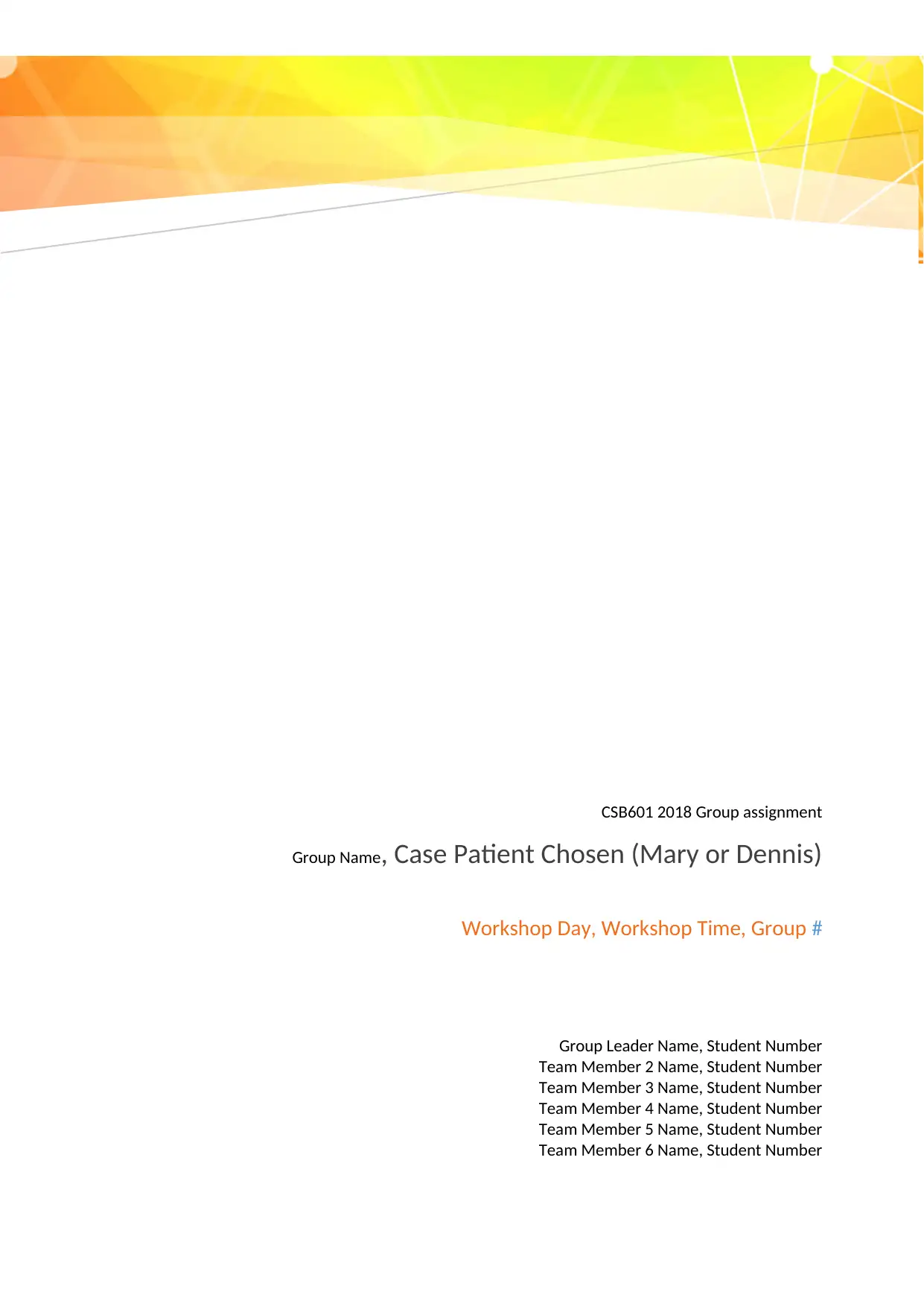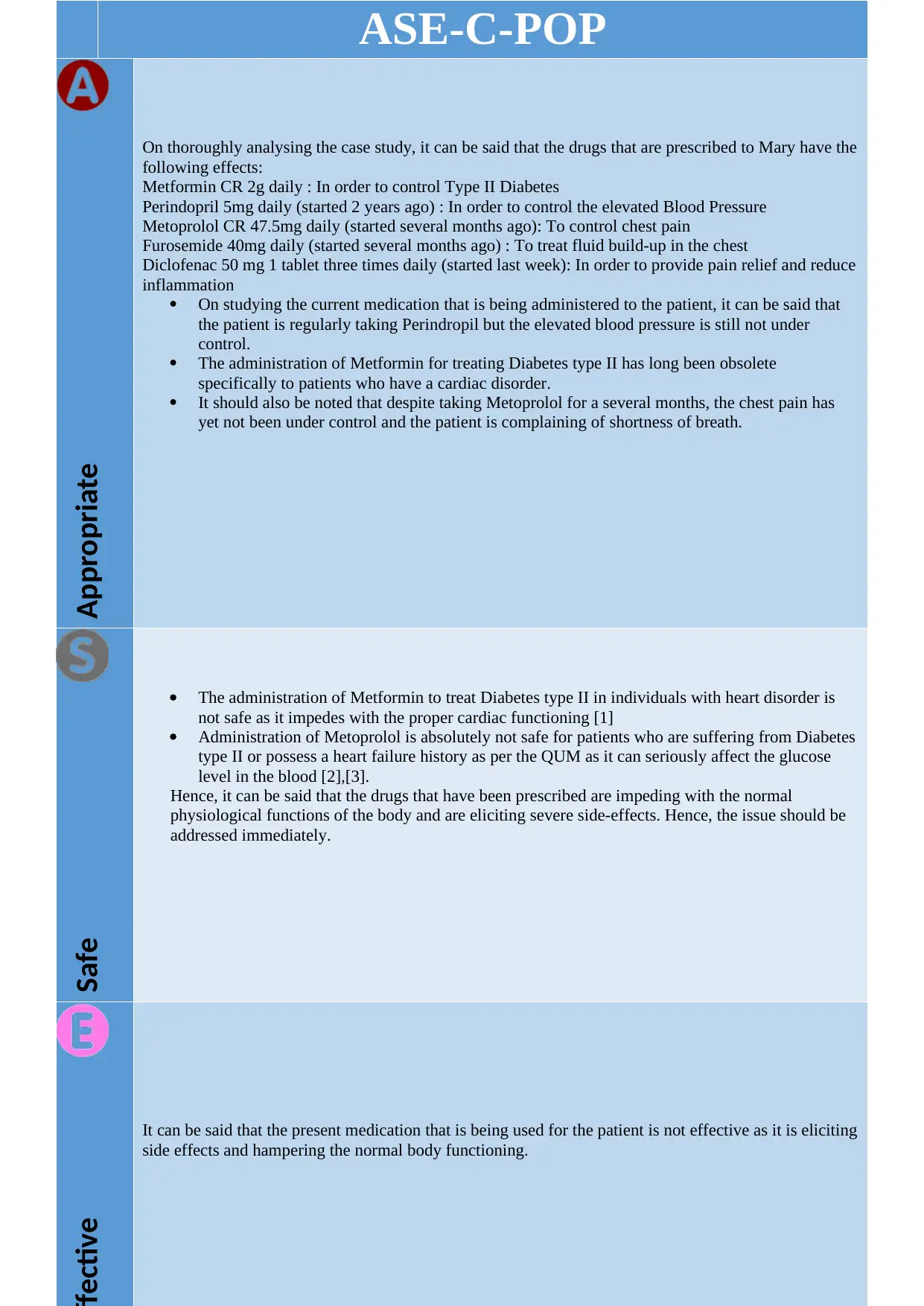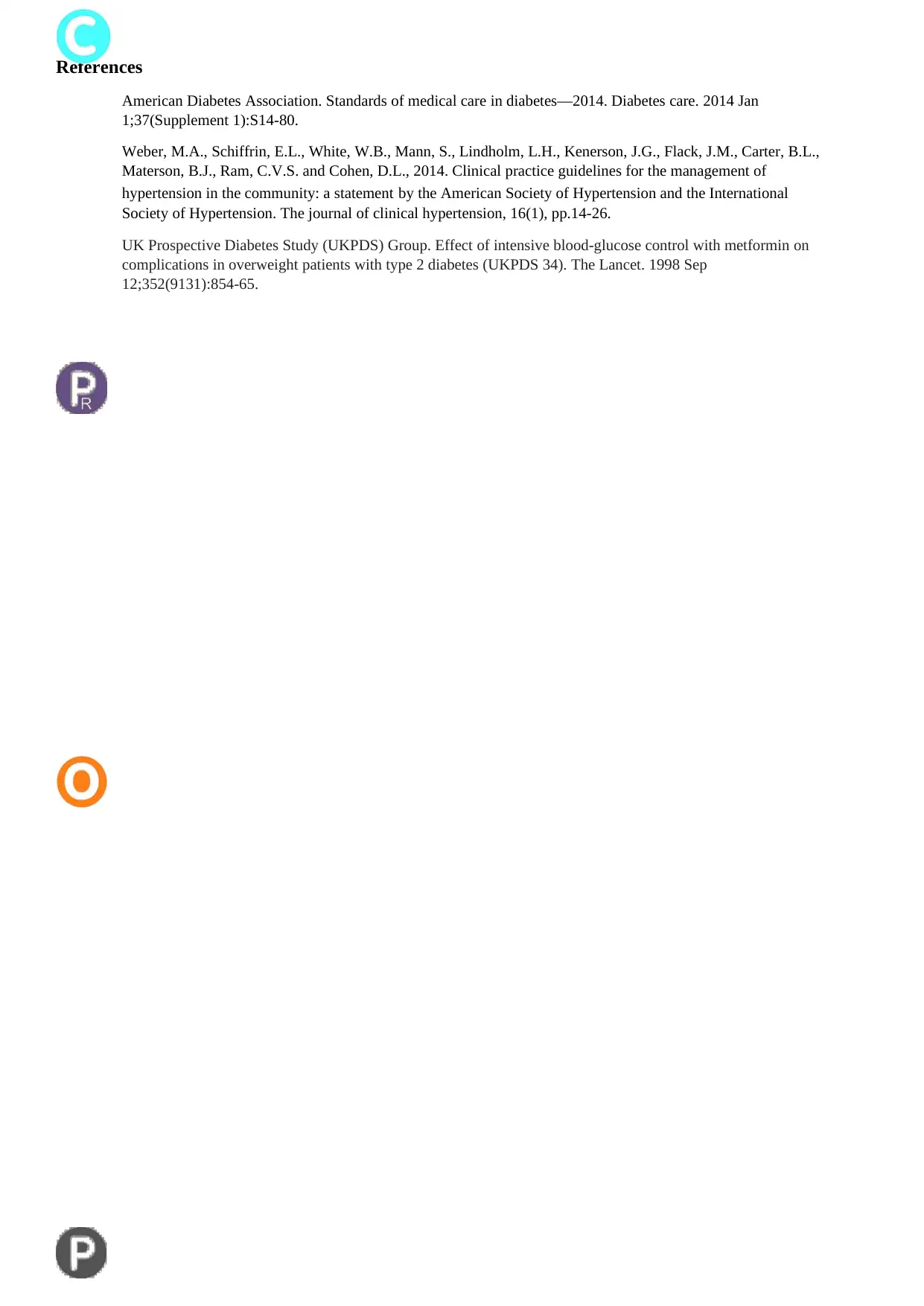CSB601 - Analyzing Patient Case Study with ASE-C-POP Framework 2018
VerifiedAdded on 2023/06/08
|3
|571
|344
Case Study
AI Summary
This assignment presents a case study involving a patient, Mary, and analyzes her current medications using the ASE-C-POP framework. The analysis identifies several potential and actual medication-related issues, including the ineffectiveness of current treatments for blood pressure and chest pain, as well as safety concerns regarding the use of Metformin and Metoprolol in a patient with a cardiac disorder and type II diabetes. The assignment highlights the importance of considering potential side effects and drug interactions when prescribing medications, and emphasizes the need for a comprehensive and effective therapeutic plan that addresses the patient's specific needs and medical history. The assessment concludes that the current medication regimen is not safe or effective, necessitating immediate attention and adjustments to improve the patient's health outcomes.
1 out of 3





![[object Object]](/_next/static/media/star-bottom.7253800d.svg)